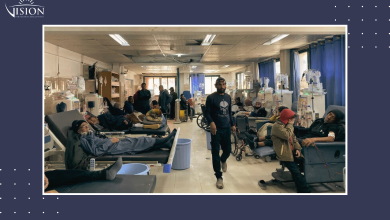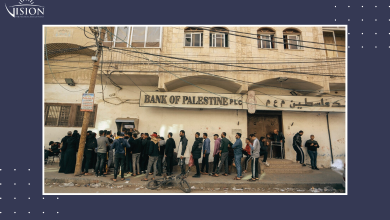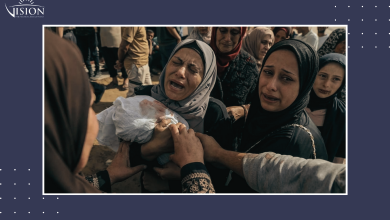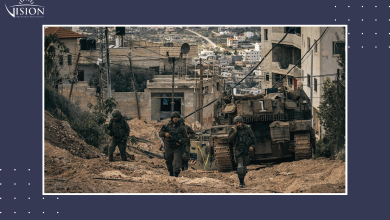The Second Battle of Jenin: An Analysis of Consequences
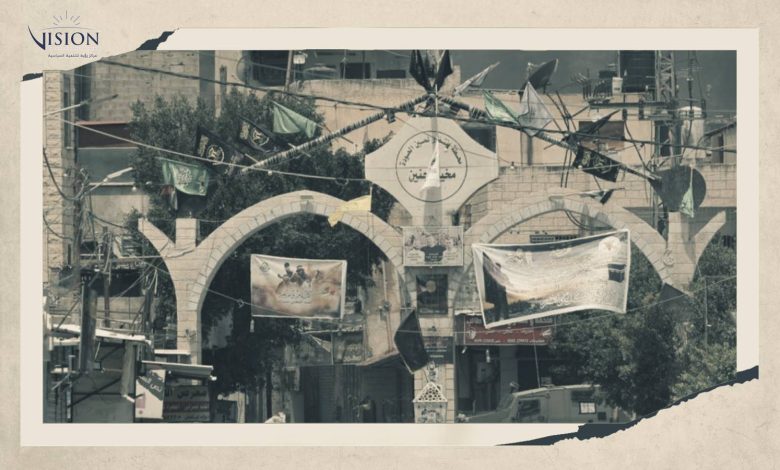
Karim Qart [1]
Two decades have elapsed since the incursion of the Jenin camp as part of the “Defensive Shield” operation during the Second Palestinian Intifada in 2002. The occupation forces launched a comprehensive new assault on the camp, spanning across July 3rd and 4th, reportedly in response to a surge in resistance activity in the West Bank both quantitatively and qualitatively, particularly the transformation of Jenin and its camps to become a bastion for the resistance.
Notwithstanding that the present assault on Jenin, dubbed by the occupation as “Home and Garden” operation, is fundamentally different from the “Defensive Shield” operation, this divergence does not exclude the memory of the aforementioned incursion, which is vividly remembered by the resistance and meticulously calculated by the occupation forces. This has reflected on some aspects of the offensive’s course and the resistance’s response, demonstrating that the reality of 2002 is difficult for Israel to reproduce and that the occupation army withdrew defeated by the blows of the resistance.
The aim of this report is to discuss the backgrounds of the aggression on the Jenin camp, the Israeli objectives behind it, and its immediate outcomes and expected repercussions.
Background of the Aggression:
The Israeli debate around launching an extensive military operation in the West Bank or at least in its Northern part is not recent. Ever since the escalation of resistance in the West Bank, and the transformation of Jenin and Nablus into bastions for the resistance, there have been calls and proposals to launch a military operation focusing on the Northern West Bank. However, these suggestions were but a part of the options proposed by the occupation leaders to deal with the escalating resistance phenomenon in the West Bank, with the chosen option being to continue with the “Wave Breaker” operation.
The escalation of resistance in the West Bank, which coincided with the presence of settler leaders (Ben Gvirand Smotrich) in the Israeli government, brought back the demands to launch a widespread military operation in the West Bank. The Minister of National Security, Itamar Ben Gvir, conditioned Prime Minister Netanyahu to initiate an expansive military operation in the West Bank in the past May, in order to halt his party’s suspension of participation in the coalition. The occupation, however, launched an assault on the Gaza Strip then, which led Ben Gvir to back down from his demands in the West Bank. However, the recent developments have rekindled the demands to launch a military operation powerfully among settler leaders, both within and outside the coalition. Ben Gvir, who previously promoted his intention to implement a second “Defensive Wall” operation, demanded a military operation in the West Bank, including the assassination of thousands of resistors if necessary.
Recently, two significant developments of resistance activity occurred in the West Bank, specifically in Jenin. The first was the detonation of an explosive device in a “Panther” vehicle, among others, and the firing upon and damaging of an Apache during the occupation’s incursion into Jenin on June 19th. In addition to affecting the prestige of the occupation army, these developments constitute a serious and growing trend that will impose limitations on what the occupation army calls “freedom of movement and action” for its forces in the Palestinian territories.
A video clip circulated on the 26th of the same month, depicting the launch of two rockets from Jenin towards the Israeli settlements. While the launch attempt was not successful, and it was the second instance of a similar clip circulating, it sparked considerable debate in the Israeli community and reinforced calls for a military operation in the West Bank to eradicate the capabilities of resistance in its infancy before it develops further, to guarantee that Jenin would not become a second Gaza in the West Bank.
Conversely, there were voices opposing a large-scale operation in the West Bank. The director of the Israeli Institute for National Security Studies, Tamer Hineman, published an article on the eve of the “Aeley” operation, clarifying that the Defensive Shield operation of 2002 had two primary objectives: to regain operational freedom for the occupation army in the region and to destroy the infrastructure of the resistance factions
These objectives have been achieved to date, according to him, and Operation “Wave Breaker” is achieving significant accomplishments against the resistance.
Determinants of Military Operations:
Despite the calls, demands, and pressure exerted by settlers and their leaders on the occupation government to launch a military operation, the occupation’s security and military echelons perceive several determinants that impede the initiation of such an operation, believing that the modus operandi of the “Wave Breaker” operation, which did not lead to the resistance’s decline but rather its escalation, should change.
Ron Ben-Yishai, the military correspondent for the newspaper Yedioth Ahronoth, illuminates these determinants through the various risks that a military operation in the West Bank could pose. There are fears of an engagement on multiple fronts, or the launching of missiles from the Gaza Strip, Lebanon, and Syria, and the execution of retaliatory attacks in the West Bank and within Israel. There are also concerns about a potential popular uprising in the West Bank, should a massacre occur and a large number of martyrs arise during an assault, which could subsequently lead to the collapse of the Palestinian Authority, a scenario the occupation does not wish to witness at this stage, for fear of resistance factions taking control of the West Bank or the emergence of chaos.
Additionally, there are apprehensions regarding the operation’s impact on normalization agreements with Arab and other potential countries considering normalization with Israel. Importantly, there is a fear of an international backlash that condemns Israel, holds it responsible for casualties, and put pressures to halt its operations. Moreover, there is anxiety about the influence of Israeli internal divisions over “judicial amendments” on the course of operations and the operation’s lack of full domestic legitimacy.
From a military standpoint, there is concern about the operation’s impact on the readiness and preparations of the occupation army, particularly its ground forces, and the exhaustion of its strength in the West Bank, especially at a time when Israel is bracing itself for the possibility of a multi-front war. It is crucial for all forces to be fully prepared for such a scenario. Besides these determinants, the occupation fears a large number of casualties among its soldiers in the event of a large-scale military operation, given the political ramifications. This fear is linked to the occupation’s memory of the 2002 invasion of the Jenin refugee camp, in which 23 Israeli soldiers were killed and another 57 were wounded, according to occupation announcements.
Occupation’s Approach to the Operational Parameters:
The occupation appears to have navigated these parameters via a series of somewhat effective measures. Namely, it sought to minimize the number of Palestinian casualties and to limit the targeting of civilians as much as possible. This strategy is evident in the battle sequence where 12 martyrs fell within approximately 40 hours of continuous confrontation, with time intervals between each martyrdom. This contrasts with previous camp invasions where a greater number of martyrs were claimed within just a few hours.
Although the precautions of the resisters contributed to reducing the number of martyrs. The occupation was concerned about preventing a massacre in the camp that could have detrimental implications for its operation. The political echelon did not indorse the operation until it received assurances from the Israeli internal security service, Shin Bet, and the military intelligence directorate “Aman”, that the operation would not lead to a civilian massacre in the camp.
The occupation sought diligently to avoid this during the operation, so as not to incite intervention from other fronts, and trigger a popular uprising or retaliatory actions.
The occupation sought to narrow the scope of its aggression, primarily confining it to the Jenin camp, rather than all resistance hotspots in the northern West Bank or at least in Jenin governorate. It also ensured the operation had a limited timeframe, ranging from hours to a few days.
Occupation army spokesperson, General Dainal Haghri, stated that the operation was: “A concentrated disciplined operational raid, which is part of a series of activities we implement and will continue.” Moreover, the occupation government informed the United States that the operation was limited to 48 hours. By narrowing the geographical and temporal scope of the operation, the occupation sought to reduce the possibility of engaging other fronts or triggering protests in the West Bank, and to avoid dispersing its forces and expanding the confrontation zone.
On the other hand, the occupation strived to maintain normal life outside Jenin, it did not close crossings, impose new restrictions, or enforce lockdown on the West Bank, all in an attempt to avoid inflaming Palestinian street anger and inciting further involvement with the events in Jenin.
Objectives of the Aggression on Jenin:
From the onset of the aggression, it was clear that the occupation did not have explicit objectives, and this issue was perhaps one of the most significant factors contributing to its failure. In addition to declaring that theoperation was geographically and temporally limited, multiple statements were issued by the occupation leaders regarding the operation’s objectives and justifications.
Moreover, the operation’s name was not assigned from the beginning, to the extent that the occupation army on its website merely described it as an activity, which indicates ambiguity in the purpose of the aggression.
Among the objectives announced by the occupation for its aggression were preserving freedom of movement and operation for the occupation army in the area, dismantling the resistance infrastructure in the Jenin camp, targeting resistors, arresting wanted individuals, eliminating command rooms, operational centers, bomb-making factories, and weapon storage facilities. This was to ensure the eradication of Jenin camp’s status as a sanctuary and refuge for resistors, labeled as the “capital of terror”, to prevent Jenin from becoming a second Gaza or emulating the Hezbollah model in southern Lebanon.
Operation’s goals included restoring deterrence, which seemed to have severely eroded in the light of field developments, particularly after the “Aeili” operation. The occupation, during the aggression, justified its attack asserting that it represents an “inspiration and emulation source” for the resistance, in which it forms a financing center for resistance cells throughout the West Bank, where more than 50 shooting incidents were executed by resistors from the camp since the beginning of the year, and 19 resistors took refuge in Jenin after carrying out their attacks.
One may observe that the stated objectives of every Israeli incursion against the Gaza Strip are consistently unfulfilled. The repetitive pattern of aggressions since 2008 underscores this outcome, suggesting that the replication of these objectives in the West Bank, a context that is strategically more complex than Gaza, denotes a lack of clear Israeli strategy in managing the escalation of resistance in the area.
This persistent conundrum appears to lack practical solutions, a sentiment echoed by the director of the Israeli National Security Research Institute, and former head of military intelligence, Tamir Heynman. During the aggression, Heynman pointed out in an article that the operation in Jenin does not equate to “Operation Defensive Shield 2”. He urged the discontinuation of the term “restoring deterrence” as it could not serve as a tangible objective. He further stated that Jenin is not the “capital of terrorism”, as “terrorism” does not have a capital, but rather, it resides in hearts and motives. By saying this, he underscores that resistance is not confined to the Jenin camp; it stretches from the southern to the northern West Bank.
Aside from the security developments and reasons behind Israel’s assault on Jenin, there are internal factors relating to the pressures exerted by government coalition members, specifically Smotrich and Ben Gvir and their party, on Netanyahu to launch the attack.
Moreover, accusations were leveled against Netanyahu by the opposition, claiming that he selected this specific timing for the aggression to thwart the opposition demonstration against the judicial reform plan, or to divert attention from it. The demonstration was planned to take place at Ben Gurion Airport, coinciding with the first day of aggression.
As per the statements made by Israeli leaders, the plan on Jenin was conceived two weeks earlier, but the delay stemmed from waiting for the convenient conditions. However, the offensive was not entirely surprising for the resisters in Jenin. This observation was made by Orit Perlov, a researcher at the Israeli National Security Research Institute, who stated that the offensive was not unexpected due to three factors: the heavy Israeli drone activity over Jenin in recent days, Israeli discussion of the situation, and the strong Israeli calls for the offensive following the spread of a video showing the launching of missiles from the Jenin area. Perlov also noted that the resisters and Palestinians in general did not perceive the attack as new or different from previous incursions, despite the use of aircraft and the increased number of Israeli forces on the ground.
The current aggression appears distinct, both in scope and character, from the 2002 assault on the refugee camp, even when one considers the assertion that the operation is focused and restricted to Jenin’s camp. This, of course, diverges from “Operation Defensive Shield”. Operationally speaking, during the 2002 invasion, the occupying forces prepared 5,000 soldiers to occupy the camp, supported by warplanes and armored vehicles, opposed to approximately 200 resistors. Conversely, during the current onslaught, the occupiers declared the mobilization of a mere 1,000 soldiers, reinforced by drones and unarmored military vehicles, in addition to the deployment of a few D9 armored bulldozers, against an estimated 500 to 600 Palestinian resistors, as the occupiers claim. This stark disparity in numbers reveals a significant operational dilemma for the occupying force during this aggression.
Traditional military doctrine stipulates that the attacking force should outnumber the defenders three-to-one, meaning that for every defender, there should be three attackers for the assault to succeed. It seems that the occupying forces have erred in assessing the strength and preparedness of the resistance, despite their claim that the assault was executed based on intelligence gathered over more than a year. Moreover, the introduction of airpower to the battle had limited effectiveness due to the resistors’ tactics and fortifications. Conducting air operations in a complex urban environment, amidst civilians, and with the presence of ground forces on the battlefield, proved to be a significant impediment to its efficacy.
Given these circumstances and the fierce resistance the occupiers encountered in the city of Jenin and its camp—which resulted in numerous casualties as announced by the resistance, the ability to ensnare the occupiers in tight ambushes, impede their advancement into the camp, and their sound preparation for the battle on all fronts of equipment, infrastructure, and surveillance networks, coupled with the occupiers’ fear of the operation’s expansion, especially in the face of the threats from the resistance in the Gaza Strip to intervene in the conflict—incidents of gunfire were reported across the West Bank, from north to south, including an operation in Tel Aviv. This development, which the occupiers feared, led to their withdrawal from Jenin after approximately 40 hours of continuous confrontation.
Results of the Aggression:
Throughout its assault on Jenin, the occupying forces have failed to achieve any significant outcomes. Despite declarations of targeting a command center for Jenin’s battalion, targeting several weapon stores, and manufacturing facilities for explosives, they were unable to arrest any resistors. Only 12 martyrs rose out of 600 resistors during this aggression. However, what the occupation has inflicted is an immense scale of destruction in and around the Jenin camp. Jenin’s municipality announced that approximately 80% of the camp’s houses were either entirely or partially demolished. Moreover, the camp’s water, electricity, telecommunications, and sewage networks have been completely obliterated. Additionally, the occupiers’ bulldozers have wrecked many streets and roads within and around the camp.
This devastation inflicted on the Jenin camp by the occupying forces is not a random occurrence but a deliberate policy adopted in all Israeli wars and assaults. This approach is expressed by the “doctrine of deterrence,” predicated on the intensive targeting of civilian infrastructure and civilians to cultivate a state of deterrence and fear about the battle’s consequences among the resistors. This notion was explicitly expressed by the occupying army’s leaders participating in the aggression. They stated, “After the resistors see what we’ve done to the Jenin camp, they’ll think twice before executing their operations.” This remark refers to the magnitude of the destruction left by the occupiers. Targeting civilian infrastructure aims to increase the cost of resistance and to create a rift between the resistors and their popular support base. The occupiers resort to this method due to their inability to cope with such security challenges, facing resistors who employ guerrilla warfare, taking refuge in mountains, underground, or in alleyways, while a conventional army operates in a vastly different manner. The aggression on Jenin has shown that the Israeli ground forces are incapable of handling the Palestinian resistance and its bases in the West Bank, this will have consequences on any coming confrontations.
Conclusion:
The occupying forces could only exit Jenin under the blows of the resistance they initially came to obliterate, which denied them a victorious image. Conversely, the resistance in Jenin emerged with an indisputable image of victory. Instead of the aggression contributing to the eradication of the Jenin camp as a “capital of resistance,” this image has been reinforced. The resistance has gained significant endorsement on the Palestinian street, suggesting the likelihood of the resistance spreading and strengthening across various regions of the West Bank.
Even though the Palestinian street’s response to the aggression on Jenin was below the required level, and the resistance in Gaza did not intervene during the aggression, the occupying forces perceived an escalating resistance in the West Bank in solidarity with Jenin. They realized it could escalate further if the aggression continued. Immediately after the occupier’s forces withdrew from Jenin, the Palestinian resistance in the Gaza strip launched a number of rockets towards the settlements adjacent to Gaza.
The timing of these rockets seems to carry important messages for the occupiers, the most significant of which is that the lack of intervention by the resistance in Gaza during the battle was not due to the resistance being subdued or fearful of the consequences of its intervention, but was based on their assessment of the situation. They would not hesitate to intervene in the event of a new aggression when required.
On the other hand, it can be observed that the resistance in the Gaza strip is always keen to deliver the final blow at the end of each aggression.
In sum, Tamer Heineman believes that the Israeli aggression on Jenin will only have temporary positive results on the Israeli security situation, and only at a tactical level. However, in the long term and at a strategic level, it will have no impact as long as there is no political path built on a clear strategy accompanying the military operation. This signifies the real quandary the occupiers face with the escalating state of resistance and the Israeli elimination of any possible political process.
………………………………………………
[1] – Researcher at Yabus Institute for Consultations and Strategic Studies, Ramallah.

